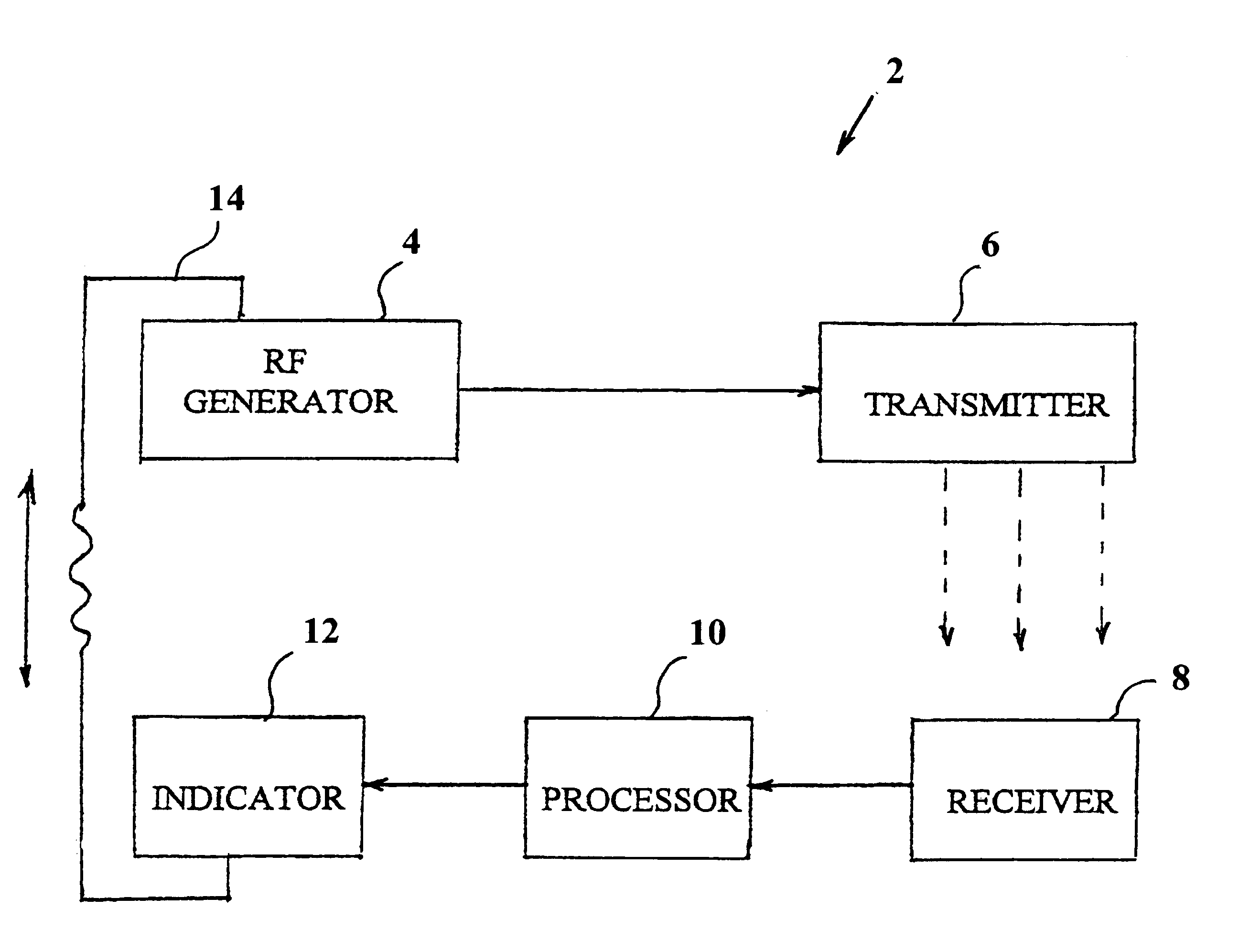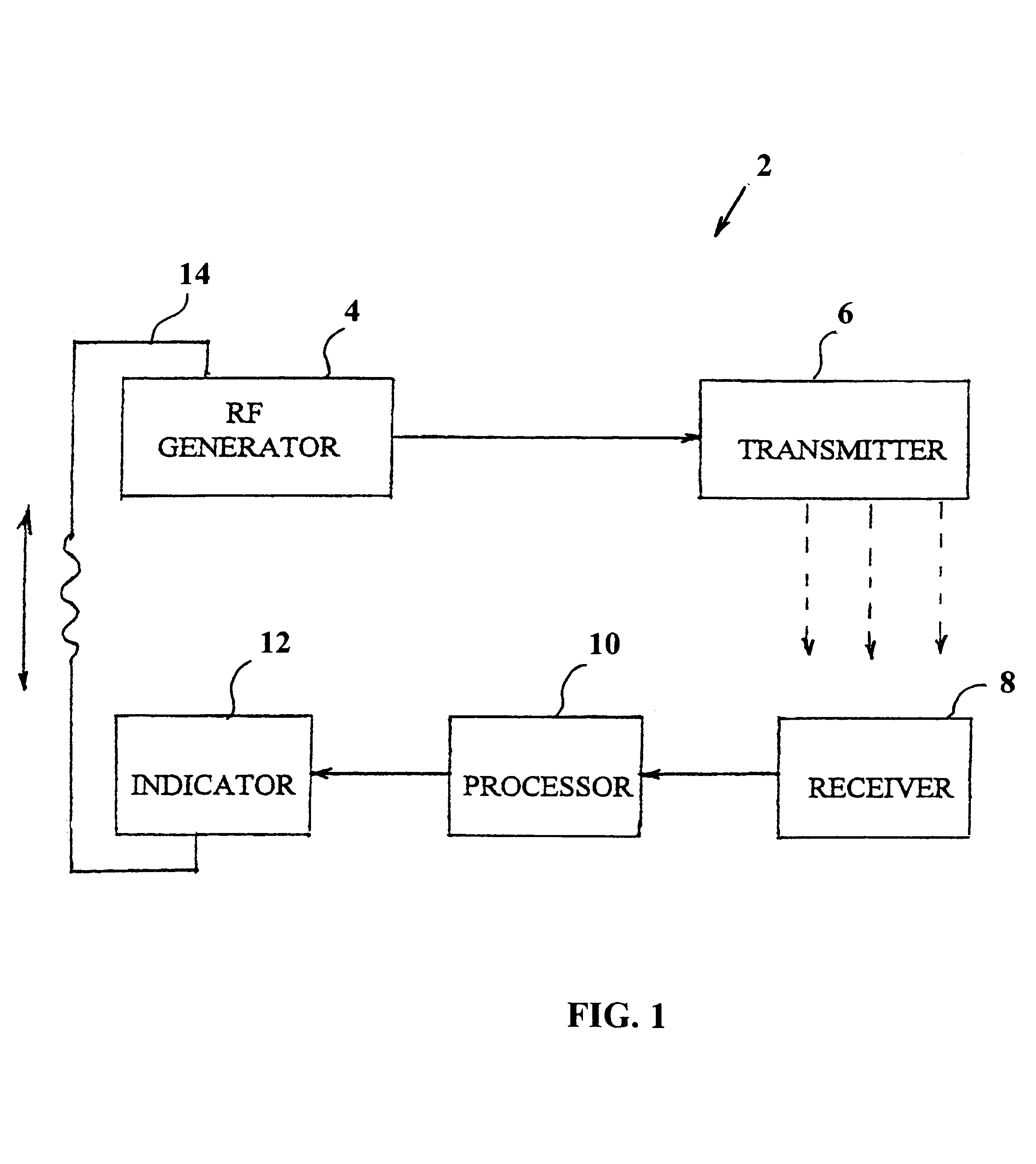System and method for detecting the state of hydration of a living specimen
a living specimen and hydration state technology, applied in the field of systems and methods for noninvasively detecting can solve the problems of insufficient drinking rate thus induced, and inability to detect the state of hydration of living specimens
- Summary
- Abstract
- Description
- Claims
- Application Information
AI Technical Summary
Benefits of technology
Problems solved by technology
Method used
Image
Examples
Embodiment Construction
One of the most prominent electrical properties of the tissue of a living body which is dependent upon its water content is its attenuation coefficient at electromagnetic radiation in the radio frequency (RF) region, when such radiation is passed through the tissue. The absorption of RF radiation by body tissue at low RF frequencies (between 10 kHz and 2 GHz) involves induction of ionic motion of the ions dissolved in the body water. At high RF frequencies (above 2 GHz and up to 300 GHz), the process by which RF energy is absorbed by the body water, is by induction of rotational excitation of the water molecules themselves. It is this last property of variation in mode of interaction due to frequency variations that constitutes the basis for a non-invasive method for detection of the water content level of a living body.
Seen in FIG. 1 is a system 2 which includes an RF generator 4 and a transmitter 6 for transmitting the generated RF radiation signal, a receiver 8 for receiving the ...
PUM
 Login to View More
Login to View More Abstract
Description
Claims
Application Information
 Login to View More
Login to View More - R&D
- Intellectual Property
- Life Sciences
- Materials
- Tech Scout
- Unparalleled Data Quality
- Higher Quality Content
- 60% Fewer Hallucinations
Browse by: Latest US Patents, China's latest patents, Technical Efficacy Thesaurus, Application Domain, Technology Topic, Popular Technical Reports.
© 2025 PatSnap. All rights reserved.Legal|Privacy policy|Modern Slavery Act Transparency Statement|Sitemap|About US| Contact US: help@patsnap.com


